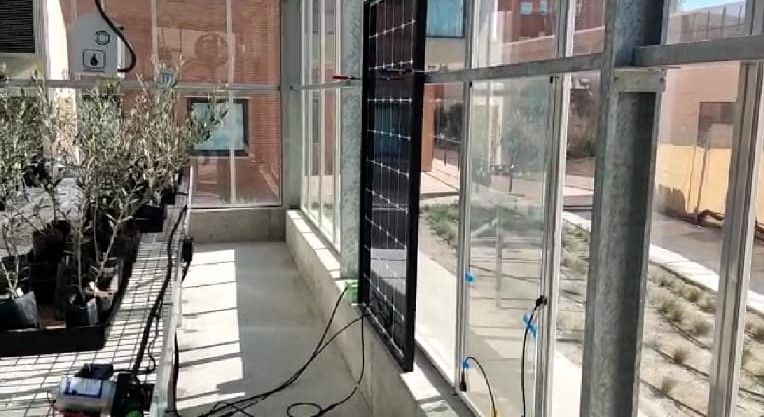Researchers at the University of Jaén in Spain have looked at the potential of agrivoltaics for greenhouses in areas with high crop cultivation in greenhouses. They have developed a dual model that they claim enables a proper project design, in order to ensure solid electricity production and high crop yields.
“Our model is applicable to all kinds of greenhouses,” researcher Eduardo F. Fernández told pv magazine. “We could just tune the tilt angle of the module and the surface to specially evaluate the greenhouse.”
The researchers considered semi-transparent crystalline silicon (c-Si) solar modules in the modeling.
“These panels, however, introduce non-uniformities that affect crops growing,” Fernández added. “To sort out this issue, novel transparent thin-film technologies are also being investigated, such as amorphous silicon (a-Si), cadmium telluride ( CdTe), perovskite and dye-sensitized panels. Also, organic transparent PV is a promising technology since its spectral transmittance can be easily tuned to be adapted to the specific spectral absorption band of crops.”
He claimed that thin-film and organic PV panels are flexible and lightweight and will be easier to integrate than c-Si-based products.
“Finally, solar concentration technology is also being investigated for its ability for achieving superior efficiencies and improving the light quality that falls on the plants due to the use of optical elements,” he said. “In this sense, different optical configurations are being investigated to focus the light on small c-Si or multi-junction solar, while the diffuse light is transmitted to the crops.”
The researchers said in “Global energy assessment of the potential of photovoltaics for greenhouse farming” – which was recently published in Applied Energy – that the new modeling considers two main outputs: the energy generated by the PV system and the crop photosynthetic rate over a specific period of time as a function of PV system transparency. It is also based on three sub-models that consider the broadband and spectral content of the irradiance, the solar cell technology and its performance metrics, and the relationship between the photosynthetic rate and the effective photon flux that falls on the crops.
“This way, the model is general and can be adapted to any crop, location and, to the main semi-transparent PV technologies,” they said.
They considered five main families of crops in the study – Cucurbitaceae, Fabaceae, Solanacae, Poaceae, and Rosaceae – for the following locations: El Ejido (Spain), Pachino (Italy), Antalya (Turkey), and Vicente Guerrero (Mexico).
“We have only considered locations with arid or semi-arid and temperate climate,” they said. “The conclusions of this work are representative of locations with a high penetration of greenhouses and with favourable conditions for the implementation of PV technology.”
The researchers found that the optimum PV system for greenhouses is an array that reduces the annual net photosynthesis rate by up to 10% and has only a marginal impact on crop yield. The system should also have a spectral total transmittance factor (TRF) of 0.68.
“The lower the photon flux at which the crops reach their maximum photosynthetic rate the lower the TRF, and therefore, the larger the PV capacity,” the scientists said. “In addition, we have also found that the higher the solar resource the lower the TRF.”
For the four locations they considered, the academics also found that the PV systems could generate around 135 kWh/m2. The total energy yield is significantly affected by the type of crop selected, they noted.
“To contextualize these results, it is noticeable to mention that the average energy yield produced by APV systems would represent a contribution to the total energy market between 2.3% (México) and 6.0% (Turkey),” they concluded.
This content is protected by copyright and may not be reused. If you want to cooperate with us and would like to reuse some of our content, please contact: editors@pv-magazine.com.




By submitting this form you agree to pv magazine using your data for the purposes of publishing your comment.
Your personal data will only be disclosed or otherwise transmitted to third parties for the purposes of spam filtering or if this is necessary for technical maintenance of the website. Any other transfer to third parties will not take place unless this is justified on the basis of applicable data protection regulations or if pv magazine is legally obliged to do so.
You may revoke this consent at any time with effect for the future, in which case your personal data will be deleted immediately. Otherwise, your data will be deleted if pv magazine has processed your request or the purpose of data storage is fulfilled.
Further information on data privacy can be found in our Data Protection Policy.